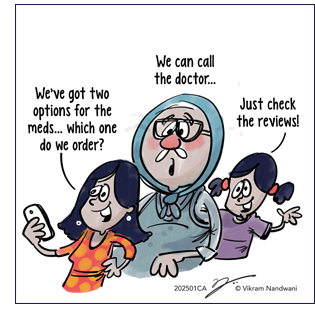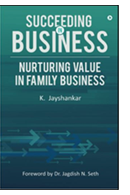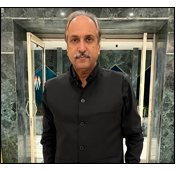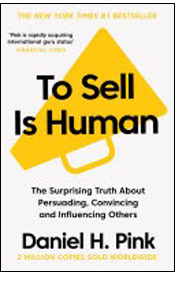|
|
Dear Reader,
In the evolving world of healthcare, the pharmaceutical industry is charting new paths through digital marketing. While traditionally reliant on face-to-face engagement, pharma companies are now leveraging digital platforms to connect with both healthcare professionals and patients.
The shift is not just about technology but about creating meaningful, compliant, and ethical interactions that drive trust and awareness. Digital marketing is proving to be more than feasible – it is becoming indispensable for building connections and shaping better health outcomes.
 This edition of Customer Acumen explores 'Finding new paths: Is Digital Marketing Feasible in the Pharma industry?'.
This edition of Customer Acumen explores 'Finding new paths: Is Digital Marketing Feasible in the Pharma industry?'.
Jay's article explores 2024 marketing trends, emphasizing AI's ubiquity, the rise of influencer marketing, video dominance, privacy decline, and the need for creative, agile marketing strategies. In the Spotlight section, Sushil Vohra - SVP & Cluster Head - Sales & Marketing, Intas Pharmaceuticals, explores the impact of digital marketing on pharma, strategies for Healthcare Professional (HCP) and patient engagement, and its future compared to other industries. We review 'To Sell is Human' by Daniel Pink, an insightful yet timeless book, which redefines sales as a fundamental human skill, highlighting how persuasion, empathy, and effective communication are crucial in both professional and personal life.
Our in-house Cartoonist, Vikram Nandwani's toons are navigating the digital pharma world!
As we welcome 2025, we wish you a year filled with success, growth, and fresh opportunities! May this New Year bring new paths to explore and new milestones to achieve. Here's to continued collaboration and a prosperous year ahead!
We value your relationship with us and look forward to your feedback and comments on how best we can serve you through our e-zine, Customer Acumen.
|

Out Now!
Succeeding in Business: Nurturing Value in Family Business
Click below to order your copy now

 

|
|
Special offer for Empowering Times readers. Get 30% discount by using coupon ETSPECIAL on the Notion Press online store.
Click here to connect with Jay.
|
|
|

|
The year gone by offered some lessons for marketing buffs. Here are a few of them for quick recall:
- Everything everywhere and all at once: this describes the generic use of Artificial Intelligence (AI) in our society. The last time one used the phrase 'omniscient, omnipotent, and omnipresent' it was with reference to God! But in the new world that we live in AI is truly everywhere and shows glimpses of its potential power to influence everything. Only the omnibenevolence of God is still missing – but who knows? There is an intense debate even in the AI community itself whether the genie that they have released from the bottle is a force for good or otherwise. Much like the dilemma of Oppenheimer and his colleagues after the Manhattan project, we are seeing experts walk out of OpenAI expressing disagreement with Sam Altman's direction for the firm.
But staying with the marketing theme for now, let it be said that artistes everywhere are up in arms over the challenge to their creative self as Advertising agencies and marketing firms rush to deploy AI tools to produce new campaigns when clients demand instant output (and tell me, when do they not!). From stunning visuals to clutter-free scripts to mellifluous voiceovers, you ask, and AI creates. Instantly. Time to say goodbye to the army of visualizers and copywriters who are the prima donnas in an Ad Agency? The thought must have crossed the minds of many CEOs!
- The phenomenal growth of influencer marketing has made marketing mavens shift budgets to channelize this trend. Statista estimates that in 2024 the market size for this tool has risen to over USD 24 billion, triple the size since 2019. Consider this: this unique community is sizeable - 127 million (about 2.4% of over 5.15 billion social media users)! Who are these influencers? The creator economy is thriving as predicted a few years back with about 30% generating regular incomes from this activity. Be it guidance or misguidance (both are true) – there is no denying that this rabble of creative wizards and trendsetters like to position themselves as thought leaders to become the pied pipers of our society today. Their tools of the trade include both popular platforms as well as niche channels, and their followers run into millions. Here is a sample of their broadcast mechanisms: Video/Photo (Instagram, Tik Tok, You Tube); Blogging; Music; Gaming; Podcasting; Livestreaming; and other community sites (Facebook, etc.).
Arguably, some of these are not new channels. But what is significant is that emerging economies like India are delighted at this rise – while also complaining about it! There is a strong relationship between the Digital India movement of the government and the entrepreneurial zest of the creators, many of whom are from interior India. The power will only expand further as Deloitte's report projects this business to rise globally to USD 250 billion in the coming days. From a marketing standpoint this has been an important channel for professionals to influence and grow their own business when their professional bodies have stymied them from advertising their services (case in point, law firm, medical experts, Chartered Accountants, etc.).
- Video marketing is here to stay. While the death of text marketing has been overplayed, the falling cost of data – and the rise of 5G – means that video is the future. Platforms are plenty but video is the medium for playing on all of them. The reasons are not difficult to guess - watching something (even voyeuristic) beats reading, especially if it is live streamed, or spiced with background rhythms. Undoubtedly, text is cheaper, but it cannot be as engaging as a moving image which demands your attention and stimulates your faculties. Short videos are parceled into your reading too through the ubiquitous QR code and entices you to into the clickbait world. One wrong click, and you are sucked into the maelstrom of excitement which deceives you with promises, until you are bled dry, both financially and otherwise. Done right, this is a powerful weapon in the marketer's armory as an engaged customer has a greater potential for conversion than those who cursorily glance over promotional material.
- Privacy is well and truly dead. Well, it died long ago, some will argue. While privacy and data protection are valued in certain geographies (Europe, for instance, with its GDPR law), what can one do when a whole generation (the children of the digital age) does not mind living their life under full public gaze. When even personal relationships matters are validated through self-publicized proclamations, how can any law or regulatory body protect you? Yes, there is a backlash when marketers are seen as intrusive elements who sneak into every aspect of your life, but I suspect that the real culprits are those who are willingly leaving their front and back doors wide open and then cast blame on others who walk in, uninvited or otherwise. Is there damage being done to society with young minds getting addicted to the marketing messages that are broadcast through their mobiles, laptops, and other forms of media? Indeed yes, and there is an attempt to curb this overexposure (Australia's recent move to curb social media for those under-16 being one) but I suspect it is too late – the horse bolted long back, and now we are closing the stable door.
A last word: the challenge for marketers will be to stay creative by harnessing the new tools. Spontaneity and agility are always in fashion, and if your firm can combine them with AI generated creativity to build emotional connect with customers, your brand will stay salient. The task is to do this in a relevant and consistent way when the new year begins.
back to top ^
|
|

|

Sushil Vohra brings over 35 years of experience in Sales, Marketing, and Business Development. A seasoned leader, he has contributed significantly to the pharmaceutical industry, particularly in his role as Senior Vice President & Cluster Head – Sales & Marketing at Intas Pharmaceuticals. Throughout his career, Sushil has focused on enhancing market share and profitability, spearheading successful growth across diverse therapeutic areas such as GI, Pain Management, Anti-Infectives, Cardio-Diabetes, and Anti-Osteoporotics.
A graduate in Science with a Postgraduate Diploma in Business Management, Sushil has complemented his academic foundation with executive development programs at esteemed institutions such as IIM Ahmedabad. He has also undertaken international leadership courses to refine his expertise in high-performance team management and strategic planning.
Sushil has been instrumental in nurturing high-performing teams, leading a workforce of over 900 professionals, and creating an ecosystem for sustained growth. He has a reputation for strategic planning, particularly in driving the transition to semi-chronic portfolios and implementing science-driven marketing approaches. Under his stewardship, notable brands such as Hifenac and Ceftas became category leaders, collectively achieving a turnover of INR 350 Crore.
Earlier in his career, Sushil served as General Manager at Abbott Truecare Pharma, where he oversaw a 20% rise in productivity and facilitated the market success of key brands like Anafortan. During his tenure at Shreya Life Sciences, he achieved consistent growth for the Biolife division, which emerged as a leading performer. His tenure has been marked by a consistent focus on brand positioning, client engagement, and introducing innovative marketing strategies for product launches.
In addition to his professional accomplishments, Sushil maintains a focus on mentorship and leadership excellence. His contributions to the pharmaceutical industry continue to be celebrated, reflecting his dedication to driving business transformation and fostering growth.
CA. How has the rise of digital marketing impacted traditional sales models in the pharmaceutical industry?
SV:
The rise of digital marketing impacted the traditional sales models in many ways:
- Helping us in Data driven decision making, offer better customer insights on customer behavioural & preference. E.g., Google/Microsoft surveys helped us in studying customer behaviour & preference.
- Enhanced reach beyond physical limitation e.g., During covid, when Physical meeting with HCPs was not possible, digital marketing has helped to bridge the gap between HCPs & pharma company.
- Cost effective option to reach at large customer base. E.g., Digital initiatives reduce the multiple time printing cost.
- Helps in engaging larger customer base for scientific initiative & upskilling programs (Webinars, masterclass, online workshops, etc.).
- Offer excellent medium in creating touch point with consumer/patients, and engaging patient base (Cipla, Breath free movement & Can helper).
- Sending personalised content for tailored marketing E.g., Sending personalised greeting to HCPs with automation was possible with digital marketing.
CA. With the growing emphasis on digital tools, how do pharma companies ensure they maintain meaningful relationships with healthcare professionals (HCPs) and patients in a virtual environment?
SV:
Pharma companies are leveraging various strategies to maintain meaningful relationship with HCPs and patients in a virtual environment:
HCPs:
- Multi-channel engagement strategies (social media, Email, virtual meeting platform, mobile app, etc. Bone Fit, Intas).
- Arranging virtual events and webinar E.g., Ortho operative masterclass planned for Orthos.
- Use of mobile app and platforms E.g., Ciplamed app from Cipla & JB next mobile app from JB chemicals.
- Creating personalised digital content E.g., Developed a portal to send personalised greetings to HCPs.
- Developing feedback mechanisms.
For Patients:
- Educational apps and sites E.g., Calinta.in from Intas for Calcium intake awareness, Lupin jeet app from Lupin.
- Creating personalised educational programmes E.g., ExemptiaCare program from Zydus to provide tailormade advice and answer patient specific queries for patient taking Exemptia therapy.
CA. Social media is often a grey area for pharma marketing. How do you view the potential for social media platforms in promoting pharma products while maintaining compliance?
SV:
Social media presents both opportunity as well as challenges. Here are some potential opportunity areas in promoting pharma product while maintaining compliance.
- Providing educational content for patient in place of direct brand promotions (BoneFit from Intas & Ahaglow from Torrent).
- Engagement and interaction of HCPs in their upskilling programs such as Webinars, Q & A sessions, Live chat, Patient education seminars, etc (IDA Workshops from Intas).
- Maintaining transparency & releasing disclosure of content to build the trust for platform.
- Maintaining data privacy of users to meet regulatory compliance.
CA. With patients increasingly engaging with online health resources, how should pharma companies shift their marketing strategies to focus on patient education and empowerment?
SV:
Pharma companies can shift their marketing strategies to these areas for patient education and empowerment:
- Develop personalised educational content following process of Survey, segment, develop, deliver, engage and monitor.
- Offer personalised resources for patients.
- Partner with HCPs to develop patient education content E.g., develop therapy specific doctor’s video on real life patient situation.
- Develop mobile app for patient to get all information at one place.
- Host virtual events and webinars for patients E.g., Virtual conferences and webinars conducted during covid have continued in many of the circumstances.
- Initiating patient support helpline E.g., Roche’s blue tree program & Pfizer’s patient access program (PAP).
CA. Looking ahead, how do you read the future of digital marketing in the pharma industry in contrast with other industries (like FMCG, Consumer Durables, Financial Services, etc.)?
SV:
Future of digital market is poised to evolve uniquely in contrast to other industries in various aspects:
- Strict regulations will continue in pharma, while other industries will be less stringent allowing more creative marketing tactics.
- Emphasis will be on educational & informative content to build the trust and provide value to patients & HCPs, while other industries focus will be on lifestyle, convenience, brand loyalty, etc.
- Engagement strategies will be on social media, telemedicine, virtual consultation, etc., while in other industries aggressive usage of social media, influencer marketing and interactive marketing campaign, etc.
- High priority for data privacy & security due to sensitive health information, while in other industries compliance will be on consumer data protection.
- Increase in the use of AI for personalised patient communication and digital therapeutics, while in other industries, use of AI for chatbots, personalised marketing and customer behaviour analysis. E.g., Anya chatbot introduced by Lupin.
|
|

|

In To Sell Is Human, Daniel Pink redefines the concept of sales, moving beyond traditional transactional roles and instead framing sales as an essential, universal skill necessary for success in both professional and personal spheres. Pink's central argument is that almost everyone engages in some form of "non-sales selling," the act of persuading, convincing, and influencing others, regardless of whether or not they hold a formal sales title. He claims that sales is no longer confined to people working in sales departments or retail positions but is an integral part of many aspects of our lives. The book makes the case that in today's world, persuading others is part of nearly every job, from doctors to entrepreneurs, and is crucial to our everyday interactions.
The first part of the book, Rebirth of a Salesman, takes a deep dive into the changing landscape of sales. Pink begins with the story of Norman Hall, a 75-year-old door-to-door Fuller Brush salesman who, despite the decline of traditional sales methods, continues to persist with charm and determination. Hall's resilience highlights how traditional sales practices are fading, but the need for persuasion and influence remains crucial. This shift in the role of salespeople points to a broader societal change where people in various fields-from healthcare professionals to educators-are now engaged in selling, albeit not always in the traditional sense. Pink introduces the concept of "non-sales selling," explaining that research suggests nearly 40% of our workday involves some form of persuading or influencing others. In addition, he highlights the rise of the "Ed-Med" sectors (education and healthcare), where professional roles that are typically not associated with sales still require skills in persuasion and influence. By framing selling as a universally needed skill, Pink encourages readers to view sales as an integral part of their work, regardless of their specific job.
As the book progresses, Pink focuses on the psychology behind successful communication, persuasion, and decision-making. He emphasizes the importance of buoyancy, a concept that revolves around maintaining a positive and resilient mindset, especially when faced with rejection. In this context, Pink uses the example of Norman Hall to demonstrate how having an optimistic explanatory style can help individuals bounce back from setbacks. Buoyancy, in Pink's terms, involves reframing challenges as temporary, external, and solvable. The second key psychological principle Pink introduces is clarity, especially when it comes to decision-making. He draws attention to how clarity helps individuals make better, more informed decisions, particularly when it comes to long-term goals such as retirement savings. Pink encourages readers to use techniques like visualizing their future selves to better align present-day behaviors with future needs, helping them make decisions that are more consistent with their long-term goals.
Another key principle is attunement, which involves understanding and aligning with the perspectives of others. Pink suggests that successful salespeople (and, by extension, successful persuaders) must be able to empathize with others, seeing the world from their point of view and crafting their message to resonate with their audience's needs. He links this principle to the growing demand for "problem-finding" in an information-saturated world. In Pink's view, identifying problems before they fully surface and offering solutions proactively is a skill that sets apart successful influencers in today's fast-paced, data-driven environment.
In the third part of the book, Pink focuses on actionable techniques that anyone can use to improve their ability to persuade and influence others. He outlines several innovative approaches to pitching, emphasizing the need for brevity and engagement in an age of information overload. One such technique is the One-Word Pitch, which distils the essence of a product or idea into a single compelling word. The Question Pitch, another technique Pink recommends, encourages the use of a thought-provoking question to capture attention and engage the listener's curiosity. Similarly, the Rhyming Pitch capitalizes on the power of rhyme to make ideas more memorable and persuasive. These techniques, according to Pink, work across various formats, from social media posts to email subject lines and even in personal storytelling. They demonstrate the growing importance of creativity and conciseness in pitching ideas effectively.
Improvisational skills are also highlighted in this section, with Pink exploring how techniques from improv can be applied to enhance listening and collaboration. He underscores the importance of active listening and the "Yes, and" approach, which encourages individuals to build upon the ideas of others rather than shutting them down. By practicing these techniques, people can improve their creativity and responsiveness, making their interactions more collaborative and dynamic. Pink links this concept to the idea of servant leadership, where the focus is shifted from self-interest to genuinely serving others. He argues that the best way to succeed in sales-and in most other endeavours-is not to focus on upselling, but rather on upserving-creating value for others and fostering long-term relationships.
Throughout the book, Pink consistently emphasizes that the most effective forms of communication and sales are rooted in positivity, clarity, empathy, and a customer-first mind-set. He encourages readers to see the act of persuading and influencing others as a human, connection-building endeavour, rather than a purely transactional exchange. In doing so, Pink aims to shift the cultural perception of sales from something manipulative and self-serving to something constructive and meaningful. Sales, in Pink's view, can be a force for good-a way to align the interests of individuals, organizations, and society as a whole.
Ultimately, To Sell Is Human is more than just a book about traditional sales techniques; it is a guide to navigating the increasingly persuasive world we live in. Pink's insights on communication, persuasion, and decision-making are not only applicable to those in formal sales roles but to anyone who wants to improve their ability to influence others in any context. By framing sales as a skill that everyone can use, Pink provides readers with a new perspective on the importance of influence in their lives and work. Through a combination of research, storytelling, and practical advice, he redefines sales as a fundamentally human activity-one that, when done ethically and empathetically, can create value, build trust, and forge lasting connections.
back to top ^
|
|
|
|
|
|